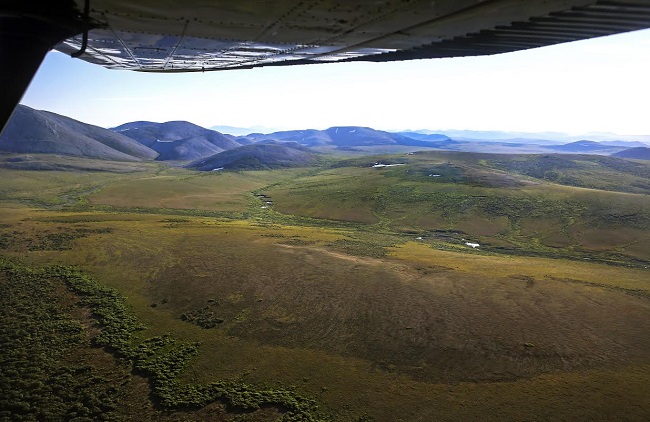The wind on Radio Hill [the campsite] was so intense, but once we were in the air, everything was still and calm… so peaceful. From the air, it was clear how things are really starting to turn green. It's a much richer, darker green than when I arrived in Alaska a month ago.

NPS Photo/Emily Mesner
People usually imagine the tundra in winter when it’s covered with snow, but plant life makes the most of the short summers north of the Arctic Circle. Thanks to 24 hours of continuous sunlight and abundant water from melting snow, vegetation flourishes during June and July. Permafrost (a layer of permanently frozen subsoil) prevents trees and other plants requiring extensive root systems from taking hold, but sedges, willows, blueberry bushes, mosses and lichens abound. During the summer, the tundra is briefly a brilliant green.
